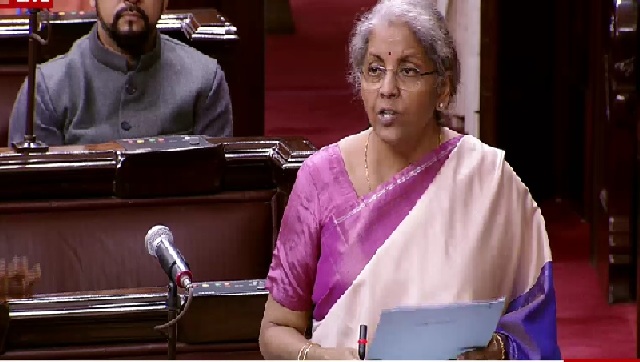The deficient monsoon forecast of the Indian Meteorological Department (IMD) has sent shivers down the spine of investors in the financial markets. Rating agencies have begun lowering their economic growth forecast and stock markets gurus are trimming their Sensex targets. On Thursday, finance minister Arun Jaitely played down the impact. He said the distress talks are “far-fetched”.
One can always hope the IMD would be proved wrong and Jaitely right. But for now there seems to be reasons for worry.
Deficient rains can easily shave off a few basis points from the GDP growth. Rating agency Crisil has already lowered its GDP forecast for the year from 7.9 per cent to 7.4 per cent. This is logical since agriculture and allied activities now have a higher share in the new method of GDP calculation, based on gross value added (GVA) and market prices, instead of factor cost.
This scenario can arise because a weak monsoon will decrease the efficacy of India’s irrigation ecosystem and hit the agricultural output and farmers adversely. The unseasonal rains have already had some impact on the crops, although this hasn’t fully been reflected in the food inflation yet. But, if rains are deficient, food prices can escalate, translating to inflationary pressures.
Even the Reserve Bank of India (RBI), which reluctantly cut the repo rate by 0.25 percent last week, has acknowledged the problem by upping its January 2016 retail inflation forecast to 6 percent from 5.8 percent. If inflationary pressures return, the RBI might switch to a prolonged pause mode.
This is evident from RBI governor Raghuram Rajan’s comments post the monetary policy announcement. “Clearly the biggest uncertainty that we are facing at this point is the outcome of the monsoon and the policy reaction to that,” said Rajan speaking to media after the policy announcement.
“We need to figure out how this plays out and government action is very important. For example, in 2002-03 there was very weak rain but you had very limited inflation partly because of government action,” Rajan said. In the policy document too, Rajan referred to “strong food management policy” from the part of government along with other measures to set things right in the economy.
Clearly, the government has a mammoth task on hand.
Banks to take hit
Commercial banks, especially those run by the government, will be a worried lot. They might see further pressure on their agriculture portfolio. “If the under-irrigated areas do not get rains, this can aggravate the problem of agriculture bad loans for farm loans are already a painful area for banks,” said Sushil Muhnot, the chairman of Bank of Maharashtra.
The recent unseasonal rains have already impacted farmers across the country. If rains play foul, public sector banks might stress on their portfolios aggravating. The yearly target for farm lending will only worsen their position.
Remember, of the total bad loans in the banking system, over 90 percent is on the books of public sector banks. They are already under stress due to the inadequate capital infusion by the government this year.
In the last seven years, banks have witnessed an increase in the stress ratios from their farm loan book. Besides the genuine reasons that might have caused delays or defaults in loan repayments, the government’s farm loan waivers too have an impact on their loan books.
The UPA’s Rs 71,000 crore waiver in 2008 and the Telengana and Andhra Pradesh governments’ waiver last year are cases in point. These populist steps have not only impacted the credit culture of the borrowers, but even have had a bearing on the banks’ bad loans.
The deteriorating financial health of state-run banks is already visible in their earnings. If indeed the IMD’s warning comes true, that will be yet another shocker for these entities.
Directed lending
But the larger question is on the rationale of the government forcing directed lending to agriculture through nationalised banks every year even when agriculture production has been falling over years as a percentage of the GDP.
Bank loans to agriculture have been growing by about 14-20 per cent every year, when the growth in agriculture is just about 2 per cent. Clearly funding shortage is not what hurting farmers. The solution, experts say, lies in innovation in cultivation and better management of farm output.
The fact is that a significant chunk of the farm loans is not being used for crop production activities but are directed to consumption-related activities. This has been the practice for several years. But the governments, both the UPA and NDA, have turned a blind eye to this problem since any action on the agriculture front would portray the governments as anti-farmer, which is a economic blunder. But, on the ground, there is trouble developing.
Indian banks have loan outstanding of Rs 7.8 lakh crore to farmers as on April 2015. In the 2015 union budget too, finance minister Arun Jaitley has increases the target to Rs 8.5 lakh crore, which, if achieved, will constitute approximately 14 percent of the total bank loans. Farmers get bank loans at 7 percent (2 percent is government subsidy and at 4 percent on prompt repayment). The RBI’s priority sector lending rules too give targets for banks on agriculture lending.
Recovery from farmers is a pain for banks given the political sensitivity in this segment. Bad loans will grow even bigger in a drought year. Typically, this is when the government asked banks to reschedule the loans or even waive off loans, further adding to the bad loan pile.
The bottomline is: Quietly a farm loan bubble is developing in the banking sector. It is high time the government separated politics and economics of the agriculture sector and stopped fixing annual farm-loan targets for banks. The decision should be left to the market.


)




)
)
)
)
)
)
)
)